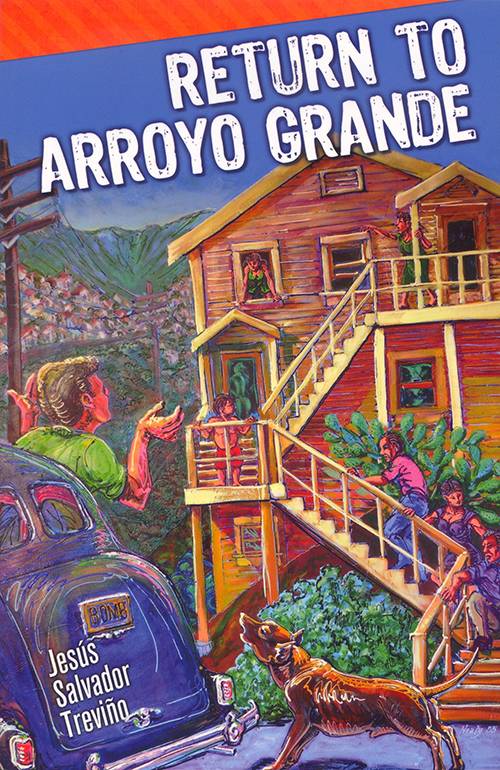Homes and Hometowns

Return to Arroyo Grande
by Jesŭs Salvador Treviño
Houston: Arte Público Press, 2015
160 pp. $17.95 paper
Reviewed by
Luke A. Helm
Return to Arroyo Grande is Jesŭs Salvador Treviño’s third book exploring his fictional border town that brims with unusual and wonderful stories. The residents of Arroyo Grande bicker, gossip, die, and resurrect; they disappear, reappear, love, grieve, and wonder about the odd weather patterns and uncanny—or is it magical?—happenstances that befall them.
That question—is it magic, or are there other explanations for the strange occurrences happening in Arroyo Grande?—animates each story in this collection. Treviño raises it over and over, confronting his characters with bizarre developments. In the book’s opening story, “Where Lost Objects Reside,” one of Treviňo’s recurrent characters, Yoli Mendoza, is asked to take over as the caretaker of lost things. That is, all lost things. As Yoli explores the house, she realizes something is off about it—the rooms of junk inside can’t possibly be contained by its exterior—she has stumbled upon a wormhole or some kind of magical power. From there, the strangeness continues. There is a theme park where people disappear only to be replaced by doppelgangers. Later an alderman who discovers that his existence is the product of someone else’s dream, and the ensuing problem for that story’s point-of-view character (the alderman’s shrink), who after his patient’s disappearance, must decide whether he, in fact, is losing his mind.
The standout of the collection bears the multivalent title, “Return to Arroyo Grande,” and it concludes the book, nearly allowing Treviño to bridge the gap between a collection of stories and a novel. In it, characters from this collection and beyond come together (behind the tutelage of the ghost of the long-dead Mrs. Romero) to stand up for the barrio in which most of the stories have taken place. Real-estate developers have crafted a plan to demolish the neighborhood, and it is up to its citizens to band together and fight for their condemned homes. Here, two things come to the forefront—Treviňo’s ability to create an imaginative world and well-realized community, and the YA tone of the book, as the story unfolds by conveniently jumping from consciousness to consciousness, observing the final standoff.
As colorful as each story is, and as well-drawn as the community is by the collection’s end, this book is best given to those who enjoy the YA genre. But the book is consistent to itself throughout, giving youthful readers plenty to enjoy on the latest romp through Arroyo Grande.
Luke A. Helm is a graduate student in the MFA program at Texas State University.
